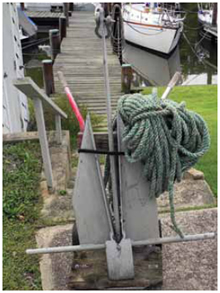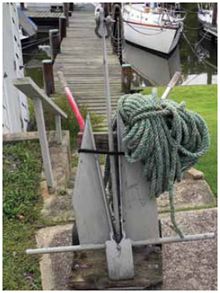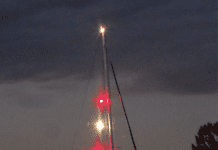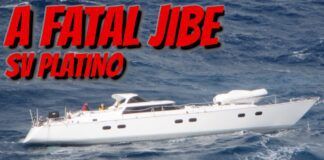
220
When tropical weather threatens, being prepared for the wind, waves, surge, and flooding pays off. How you prepare for a storm depends on where your boat is in relation to the storm and whether you choose to keep it at a dock, on a mooring, or anchored in sheltered waters or a hurricane hole.
Irene may have lacked super-storm status, but her sizable diameter and the angle with which she approached the Northeast coastline caused considerable impact from Beaufort, N.C., to Bangor, Maine. Sailors hiding from the storm faced a range of impacts. The most common was tropical-force winds with gusts to about 60 knots.
For those on the Chesapeake Bay, Irene passed to the east. The combination of encountering the favorable side of the storm—with the subtractive nature of its wind direction and forward movement reducing the apparent wind—and the minimal storm surge kept damage to docks and marinas to a minimum. Long Island and Connecticut, on the other hand, saw a more significant tidal rise, and those caught on the eastern side of the storm also had more wind to contend with. Marinas as far inland as Lake Champlain (in Vermont and New York) suffered serious damage as sailboats and finger piers lost their grip on the lake side. Rain was a big issue, and as small streams flooded, a plethora of debris and flotsam floated into coastal waters, creating prop-damaging hazards during the days following the storm.
Along the Chesapeake, we noticed that more owners of the marina-secured boats had stripped off furling headsails and bimini tops ahead of the storm’s arrival. Those left on moorings doubled-up on bridles and added secondary mooring pendants.
Quite a few sailboats were hauled out in preparation for the storm. Many owners did so as a result of the early forecasts that indicated Irene would make landfall as a Category 2 or 3 hurricane. The fact that it had weakened significantly just before and during initial contact with land changed the outcome. North Carolina bore the mainland brunt of the storm, and only one or two boats were caught out. A 30-foot sloop heading up the Chesapeake was driven ashore. What the crew had in their mind was an escape from the storm’s worst effect. Unfortunately, they were a day late in their departure and certainly should have stayed put.
Landfall in New England coincided with a new moon spring-tide, and short-scoped moorings in crowded mooring fields led to a number of dragging problems. Those on the eastern side of the storm saw more wind and surge while those on the western side ended up with considerably more rainfall.
Storm Readiness
If you plan to ride out a storm aboard, be sure the following are checked off your To Do List well ahead of the storm:
• Search out an uncrowded, protected anchorage with adequate swinging room.
• Strip off high-windage items like sails and biminis.
• Lash loose deck gear.
• Dorades ready to rotate sternward.
• Double-check that hatches and opening ports are dogged securely.
• Make sure your bilge pumps are reliable and are working properly.
• Have a bright LED anchor light.
• Load your ground-tackle arsenal with anchor overkill.
• Be sure you have plenty of fenders deployed and extras ready to deploy.
• Have these items at the ready: extra line, a waterproof head lamp, a sharp fixed-blade knife (on deck), a well-made bucket and backup bailers, good victuals, and a couple of good books.










































